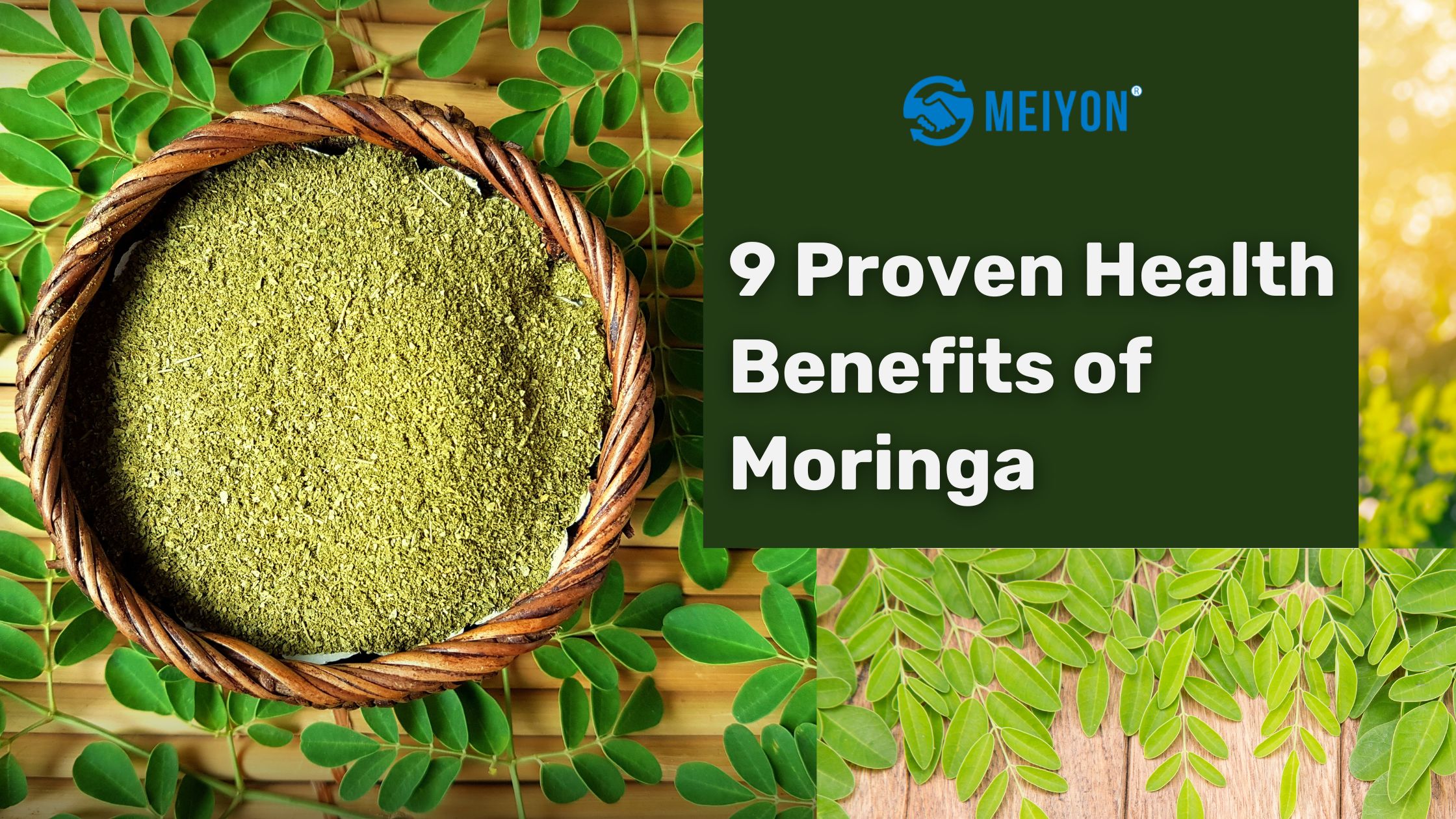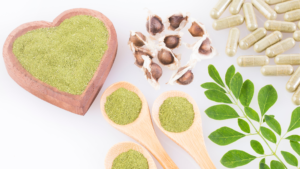Moringa oleifera is a drought-tolerant tree indigenous to South Asia and Africa. It has been grown for millennia around the world due to its purported health advantages. While the plant’s leaves can be eaten, they are also available as supplements in pill or powder form. The leaves have a peppery, arugula-like flavour, while the powder has an earthy, green flavour reminiscent of matcha. Blend the powder into a green smoothie, pesto, or hummus, or add it to granola before baking or soups before boiling for a nutritious boost.
Health advantages of moringa
More randomised, double-blind studies on people are needed, but preliminary research supports many of moringa’s centuries-old claims, including its function in infection treatment, cholesterol reduction, and blood sugar management, to mention a few.
1. May reduce cholesterol :
Several research published in the National Library of Medicine found that feeding moringa to animals with high cholesterol (including rabbits and rats) reduced their cholesterol levels. Lower cholesterol is associated with a lower risk of heart disease, but additional research is needed to understand whether moringa has the same heart-healthy effects in humans.
2. May boost haemoglobin levels:
Red blood cells contain haemoglobin, an iron-containing protein that transports oxygen from the lungs to the rest of the body. Anaemia is a deficiency of healthy red blood cells or haemoglobin, which causes fatigue, weakness, and shortness of breath. This disorder is widespread among women. Moringa may help, as it has been demonstrated to considerably raise haemoglobin levels in both adolescent girls and postmenopausal women.
3. Increases antioxidant activity:
Antioxidants are molecules that help our bodies eliminate potentially harmful agents known as free radicals. Too many free radicals can cause sickness. Moringa is abundant in antioxidants, such as quercetin, which lowers blood pressure, as well as vitamin A, C, and beta-carotene. In addition to preventing disease, researchers discovered that including moringa in postmenopausal women’s meals raised their blood antioxidant levels, which may help reduce health concerns after the menopause.
4.Has a part in breastfeeding:
Moringa has been used for generations in Asia to help breastfeeding moms produce milk, and while scientific studies to establish this impact is scarce, one study discovered that moringa leaf cookies boosted the protein, lipid, carbohydrate, and vitamin A content of breast milk. Another study of 68 postpartum mothers who had given birth to preterm infants discovered that moringa increased milk production when compared to those who received a placebo. One study on postpartum mothers who gave birth to full-term infants found no increase in the median volume of breast milk, but the moringa-fed group produced 47% more breast milk than the control group.
5. Has the potential to combat cancer:
Extracts from the moringa root were discovered to kill liver, breast, and colorectal cancer cells, implying that moringa could be a natural source of anti-cancer chemicals. Moringa leaves also shown anti-cancer capabilities and the ability to inhibit the proliferation of cancer cells, although the seeds did not. Studies on actual patients, rather than cells, are required.
6. May promote bone health:
Women are more prone to osteoporosis, or decreased bone density, due to the lack of oestrogen after menopause. However, eating foods rich in bone-building vitamins and minerals such as boron, vitamin C, magnesium, and potassium can help prevent this deterioration. It contains all of these micronutrients, as well as others necessary for bone health and calcium absorption. While one study revealed no improvement in bone density in postmenopausal women who fed the plant for 12 weeks, another study in rodents discovered a considerable rise as well as additional benefits such as enhanced gut microbiota composition. Another experiment fermented leaves and discovered that it boosted the plant’s calcium bioavailability, which dramatically improved the bone growth and strength of calcium-deficient rats.
7. Could help combat infections:
All parts of the moringa tree have been found to be active against bacteria, fungus, viruses, and parasites. For example: Compounds isolated from moringa seeds may inhibit the potential of bacteria to cause disease, whilst those taken from this leaves may aid in the elimination of harmful microbes. Kaempferol, a natural flavonoid derived from moringa, has an antimicrobial action. Furthermore, a protein derived from seeds has been shown to detoxify polluted water.
8. Acts against inflammation:
Although some inflammation is normal (caused by the body’s response to infection or damage), chronic inflammation can lead to health issues such as heart disease and cancer. In one animal trial ,its revealed strong anti-inflammatory action, while it was not as effective as ibuprofen, and in another cell investigation, it had similarly outstanding results. In one study on guinea pigs, it was found to lessen airway inflammation, which could aid in the treatment of asthma. In fact, a study of 20 asthmatic patients given moringa seed powder found that their illnesses improved after only three weeks.
9. Heals wounds and relieves pain:
It has been traditionally used to treat wounds, burns, and other injuries. In one study on rats, researchers discovered a significant increase in wound closure rate and a decrease in scar area after administering leaf extract. Furthermore, several studies have validated moringa’s pain-relieving effects, including one in which mice were fed an extract of moringa tree fruits for three days and experienced more pain relief than the control group, and another in which moringa was found to be comparable to the anti-inflammatory drug indomethacin.
Conclusion:
It has been scientifically shown to offer numerous health benefits, ranging from improved nutrition to potential disease prevention. With its rich nutrient profile and medicinal properties, incorporating Moringa into your diet may contribute to overall well-being and vitality.





